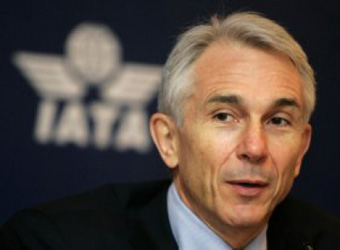Middle East carriers could post financial losses over the coming 12 months, despite appearing to have weathered the worst of the Arab Spring unrest, the CEO of IATA warned Monday.
According to a forecast published the industry body in March, the region’s aviation sector will bank a profit of US$500m in 2012, a significant increase compared to its December estimate of US$300m.
For the whole of 2011, the Middle East’s air travel industry recorded a profit of just US$100m, with the Arab Spring unrest in the region a major factor in this poor performance.
“The Middle East is one of just two regions which has seen its output boosted since our December forecast… and as a whole appears to have recovered from the negative effects of air travel of the 2011 Arab Spring,” CEO and director general Tony Tyler told delegates at the Arabian Aerospace conference in Abu Dhabi today.
“But these are not strong results when measured against the size of the region’s aviation sector. The entire industry remains extremely vulnerable to new shocks which could push it into losses.”
One such shock could be be the cost of fuel, which is likely to present a challenge for the global industry, as Arabian business stated.
The consensus forecast from IATA is that brent crude will average at US$115 a barrel in 2012 up from US$111 last year, adding another US$36bn dollars to airline operating costs.
In light of this, carriers in the Arab could benefit from consolidation, he said.
“If the oil price goes a lot higher than it is now then all bets are off. It wouldn’t take much to plunge the whole industry into losses.
“One of the problems of the industry is that it is much too fragmented, consolidation is a way forward, which would no doubt make airlines healthier businesses. It needs to consolidate if it wants to be more sustainable in the long run.”
One area where the Middle East has not improved its record is in safety Tyler said.
According to IATA, the Middle East saw a decline in its safety record for 2011, as the industry as a whole saw its safest year in history.
Around the world, there was just one hull loss – an accident where the craft is destroyed – every 2.7m flights, representing a 39 percent improvement on 2010.
“Unfortunately we did less well in the MENA region,” said Tyler.
“In 2011, there were 2.02 hull losses per 1m flights, which is one hull loss for every 500,000 flights, and five times the world average.
“It represented a sharp deterioration from the previous year, when the MENA achieved a rate of 0.72 hull losses for every 1m flights.



